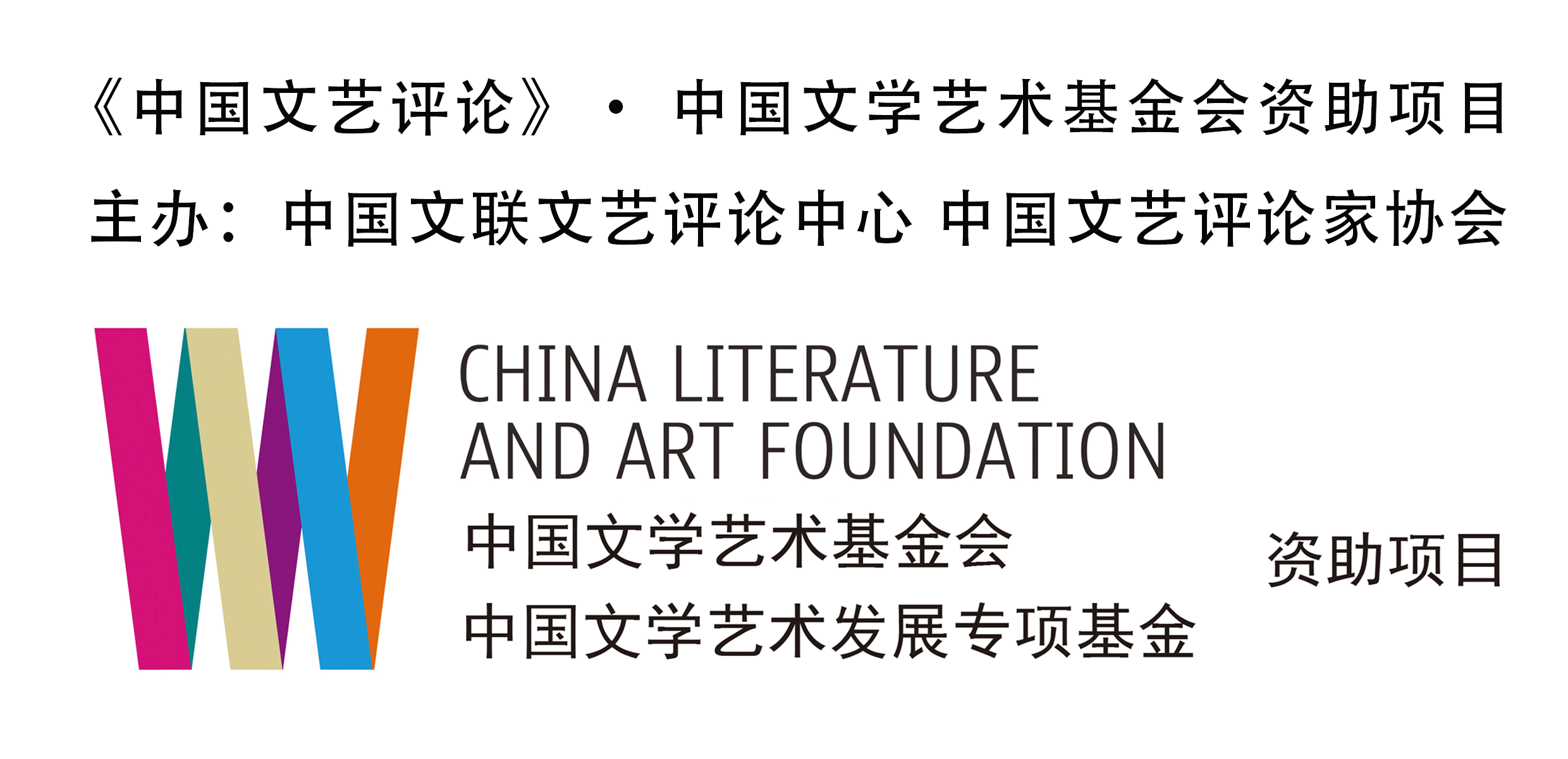
Special Feature
■ Shouldering A New Mission, Embarking on A New Journey:Creating A New Prospect of High-Quality Development in Literature and Art Criticism(PP. 4–7)Li Yi
Special Topics • China's Literature and Arts in the New Era and New Journey (I)
■ People's Literature and Art as the Literature and Art of the New Era(PP. 8–16)Peng Feng
Abstract: People's literature and art is the literature and art of the New Era, which is different from folk literature and art, consumer literature and art, and mass literature and art. Only when socialism with Chinese characteristics has entered a new era and the productive forces have been greatly developed, shall we have real people's literature and art. People's literature and art integrates and sublates the elite, the folk, the consumer, and the mass literature and art, and participates in social construction in a way of constructive engagement. It breaks through the distinction between the economic base and the superstructure, and satisfies people's pursuit for a good life.
Keywords: people's literature and art, folk literature and art, consumer literature and art, mass literature and art, constructive engagement
■ Flowing-tracing: A New Aesthetic Quality in Contemporary Chinese Art( PP. 17–25)Wang Yichuan
Abstract: Flowing-tracing represents a novel aesthetic quality emerging in contemporary Chinese art. The evolution of Chinese art's aesthetic qualities has progressed from classical affective images to modern flowing images, then to type, flowing type, and finally to flowing-tracing. Characterized by its simultaneous forward flow and backward trace, flowing-tracing harnesses both new and traditional aesthetic resources. It reactivates the legacies of ancient civilization within a contemporary context, integrating these legacies into a future-oriented innovative process. Thus, this new aesthetic quality serves as a transformative and creative force in contemporary life, bridging future possibilities with historical traditions. Flowing-tracing manifests in various ways, such as creating the new by tracing origins, finding authenticity through backward flow, blending the past and the present, opening new avenues by emulating the old, popularizing elegant elements, and resolving emotional complexities. In a nutshell, flowing-tracing creates a new aesthetic quality by transforming historical resources into contemporary innovations.
Keywords: flowing-tracing, new aesthetic qualities of art, affective images (ganxing), flowing images, type, flowing type
■ Theory and Practice of Literary and Artistic Creation in the New Era from the Dimension of Development(PP. 26–36)Xiang Yunju
Abstract: Reflecting on Chinese culture in the midst of the collision of Chinese and Western cultures, it is necessary to pay more attention to the excellent essence and grand traditional elements in cultural traditions, and to the vitality, bloodline, genetics, constancy, civilization, humanity, universality and modernity embedded in them. Great importance must be attached to the important attributes among cultures: the question of the typological differences and similarities between cultures, that is, the cross-cutting question of the individuality and commonality of cultures as well as the continuity of their differences and similarities. Today, when the Chinese people are standing up, getting richer and stronger, cultural confidence is the backbone, ambition and foundation of our era. General Secretary Xi Jinping's concept of "creative transformation and innovative development of excellent traditional Chinese culture" is a scientific methodology for us to answer the proposition of this era. Because of the figurative, visual, original and aesthetic nature of literature and art, the image of China as a whole is in the process of being reshaped and reproduced by the great civilization, showing the aesthetic style of the modern civilization of the Chinese nation in the process of Chinese path to modernization.
Keywords: cultural confidence, excellent traditional Chinese culture, creative transformation, innovative development, regular experience
■ Accelerating the Construction of Chinese Discourse and Chinese Narrative System (PP. 37–43)Zhang Dexiang
Abstract: The construction of Chinese discourse and Chinese narrative system should be guided by Xi Jinping's Thought on Socialism with Chinese Characteristics for the New Era. Starting from the Chinese practice, the values and civilization concepts contained in practices of the Chinese path to modernization should be manifested into a discursive system and narrative system, which highlights the civilization concepts of the new form of human civilization and carries the pursuit of common values of mankind. In Chinese literature and art of the new era, it is necessary to adhere to the subjectivity of Chinese culture, stand firmly on the position of Chinese culture, firmly grasp the aesthetic right of Chinese civilization, realize spiritual independence, create more excellent works that enhance the spiritual strength of the Chinese people and strengthen their ambition, backbone and spirit, and accelerate the construction of the Chinese discourse and the Chinese narrative system with the fine works that are worthy of the times.
Keywords: Chinese literature and art, discursive system, narrative system, Chinese path to modernization
Theoretical Exploration • Intermedial Studies of Arts
■ Family Resemblance, Semiosphere and Intermedia Narratives in Art (PP. 44–68)Long Diyong
Abstract: The totality of art is only a relative term, a concept of "family resemblance" that represents all the specific categories of art. Lotman sees the overall art as a large semiosphere, and within this semiosphere are many small semiospheres composed of various categories of art. Semiosphere has two basic characteristics: 1. boundedness, that is, semiosphere has boundaries, which is mainly related to internal and external relations; 2. imbalance, that is, semiosphere is distinguished into center and periphery, which is the internal organizational rule of the semiosphere. Both of these features have brought about a profound impact on the inter-media narrative of art texts. The combined application of the theories of "family resemblance" and "semiosphere" can not only explain the inter-medial narrative problems between art and non-art and among different categories of art in the artistic semiosphere, but also reasonably explain the inter-references in the same literary and artistic genres.
Keywords: family resemblance, semiosphere, inter-media narrative, boundedness, imbalance
■ Sound Expression in Images:An Inter-media Interpretation of The Painting of Listening to the Pines in Ancient China (PP. 69–80)Liu Tanru
Abstract: How images can express sound is a matter of artistic inter-media expression. The ancient Chinese painting "Listening to the Song of the Pines" achieves the aesthetic manifestation of the sound of the pines through enhancing the auditory presence of the subject, the "chorus" effect of the "one master and one servant" schema, the blank composition metaphorizing the wind hole, and the use of inscribed poems to compensate for the sound of the pines in the picture. Moreover, the frequent use of the "Listening to the Song of the Pines by the Water" and "Listening to the Song of the Pines by the Pines" schemas, using sound to assist the sacred, opens up a natural aesthetic space. In addition, listening to the sound of the pines is also a process of transforming the sound of the pines into a legacy, from reality to virtuality, and extending and circling. For the painting "Listening to the Song of the Pines", it is better to say that the sound of the pines is expressed through artistic momentum, summoning space, creating space, and dominating space with time, rather than through the spatial representation of the sound of the pines through the picture.
Keywords: song-listening picture, cross-media, water-facing song-listening, musical legacy, artistic momentum
Random Thoughts on Art
■ From Inter-media to Inter-cultural:A Review of Chinese Acrobatic Theater Practice in the New Century (PP. 81–91)Dong Yingchun
Abstract: As an important form of contemporary inter-media theater practice, the trend of creating and performing Chinese acrobatic drama at the beginning of the new century is China's artistic achievement by the re-mediatization of acrobatics with various media such as drama, music, dance and multimedia technology. Under the influence of Western post-drama and new circus creative concepts, Chinese acrobatic drama has become an inter-media theater art with Chinese nature as well as global characteristics. The industry exploratively regards acrobatic drama with plots, characters, episodes and visual wonders as a new type of dramatic stage performance style. Under the background of Chinese culture going global and the continuous advancement of Chinese path to modernization, Chinese acrobatic drama has once again become one of the main forces of China's foreign exchanges and overseas commercial performances.
Keywords: Chinese acrobatic drama, inter-media, excellent traditional Chinese culture, inter-culture
■ Singing and the Medialization of Bodies:On the Perceptual Construction in Socialist China through the Song Wo De Zu Guo (My Motherland)(PP. 92–104)Piao Jie
Abstract: The song Wo De Zu Guo (My Motherland) shows the construction of the national voice belonging to socialist China by absorbing and transforming traditional Chinese artistic elements and Western music forms. The voice in the song is generated by the reversed structure of "lead singer + chorus", in which the chorus voice guides the lead singer, which leads the voice of the Party turning into the voice of the people, and reconstructing the body of the people as the result. This kind of perception and expression has a wide and continuous effect on the feeling structure of contemporary Chinese people. It is a representative case of contemporary Chinese cultural and political practice, which can reflect the method of socialist thought embodied in people.
Keywords: Wo De Zu Guo (My Motherland), people's literature and art, medialization of bodies, cultural politics
Critical Analysis
■ Interpreting the Traffic Password Content of the Yue Opera New Dragon Gate Inn(PP. 105–113)Yang Siyi
Abstract: The Yue Opera New Dragon Gate Inn is an adaptation of Tsui Hark's film of the same title. Utilizing the environmental theater, the play immerses the audience in the atmosphere of the Dragon Gate Inn in the frontier desert, allowing them to engage with the overt and covert struggles depicted. In the process of creation and dissemination, the creative team showcased their innovation not only by incorporating ACG culture to attract young audiences but also leveraging fans' word-of-mouth to achieve flow surges. Breaking away from traditional norms, the Yue Opera New Dragon Gate Inn has garnered significant attention and acclaim for its innovative approach. Based on the perspective of opera ontology and communication, the play has opened up a new path for the preservation and innovation of opera art in the new media era.
Keywords: Yue Opera, New Dragon Gate Inn, environmental theater, explosive popularity, new media era
Interview with Renowned Experts
■ A Lifetime in the Field with Epic Poetry: An Interview with Folklorist Lang Ying (PP. 114–124)Interviewed by Deng Lifeng

Inside Front Cover
Chinese Literary Critics: Xiao Xiangrong


Inside Back Cover
Review of the Second Batch of bases of Chinese Literary and Art Criticism:The base of China Literary and Art Criticism (Zhejiang University)


Back Cover
New Book Promotion: Annual Report on Art Development of China 2023



中国uedbet全球体育uedbet让所有玩家提款网

“中国uedbet全球体育uedbet让所有玩家提款”微信公号

“中国uedbet全球体育uedbet让所有玩家提款”视频号